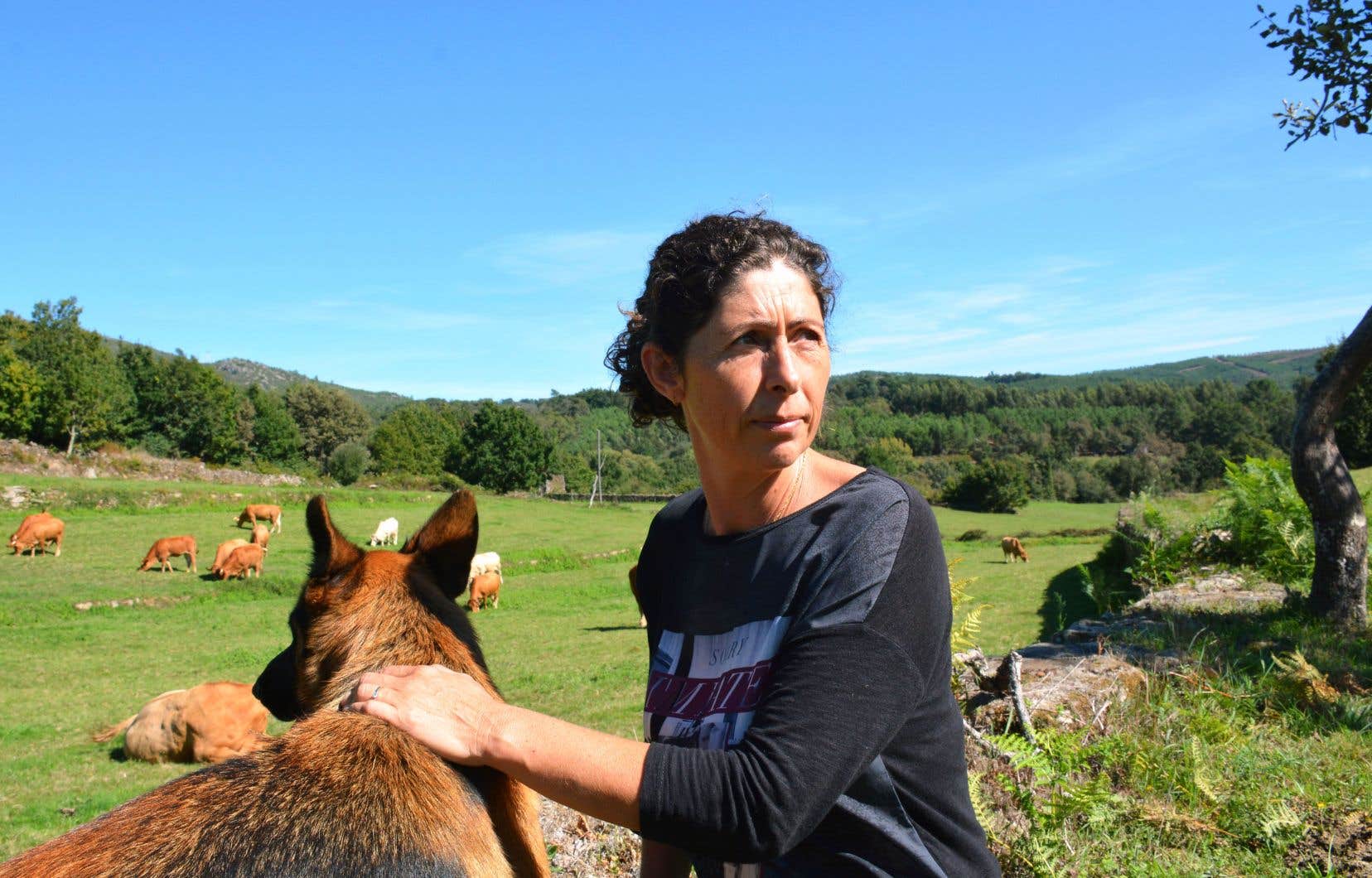Under an autumnal sun, wedged between green hills, not far from white houses with terracotta-colored tiles, the field is occupied by 25 long-horned cows lounging along a winding road in Covas do Barroso.
The hamlet of 192 souls in the north of Portugal, surrounded by a pine forest, sits on a pile of gold: lithium, a metal essential for the construction of electric car batteries. The bovids of Aida Fernandes and Nelson Gomes will have difficulty cohabiting with the exploitation of this “white gold”, which shines brightly in the current ecological transition.
The couple has been mobilizing against the future exploitation of an open-air lithium mine, the largest in Western Europe, for five years.
A little over four months ago, on May 31, the Portuguese Environmental Protection Agency finally gave its approval to the project led by the British company Savannah Resources. The first shovels should take place in less than three years over an area of at least 600 hectares. But…
“Não a mina. Sim to life! »
The Fernandes-Gomes couple is keeping an eye on things and, with the support of Portuguese and foreign ecological groups, they intend to fight in court with this “common sense” argument: there is no question of polluting our villages to clean up the cities.
“ Não a mina. Sim to life » [Non à la mine, oui à la vie]. The battle has only just begun, but can it be won? Aida Fernandes, 43, has a sad smile. “Covas do Barroso is at least 90% against the opening of the mine in this priceless landscape. We do not want to lose the gardens of our paradise. »
Covas do Barroso is at least 90% against the opening of the mine in this priceless landscape
The region, located 140 kilometers from Porto, is classified as a world agricultural heritage site by the Food and Agriculture Organization of the United Nations.
With her three-year-old dog Sally, Aida Fernandes weaves between her cows of the indigenous Barrosa breed, whose meat is famous throughout Portugal. Each is worth nearly $3,000, and the Iberian wolves, which are numerous in the area, are never far away.
In her old little black car – there are around twenty in the village which had 500 inhabitants 50 years ago – the mother of Sofia, 17, and Gabriela, 12, goes to have an aperitif at Elizabeth’s. Her friend’s house will be the first affected by lithium mining.
“It is less than 500 meters from the planned drilling. Imagine the dust I will receive…” The Savannah project provides for drilling at least 1,700 meters deep and an open-air crater 800 meters in diameter for an operating life of less than twenty years.
The British company would have promised wonders to the villagers, quickly rejected: our ancestral lands are not for sale, regardless of the price, repeats the mayor, Lucia Mo in front of the village bar O nosso café [notre café]. The boss and his clients prefer not to take a position.
For Nelson Gomes, there is simply no clean mine and, if Savannah promises to buy the land inherited from her great-grandparents, “it’s as if she’s telling us that she’s going to cut us off.” arm or leg and then offer to one of the best doctors in the world to cure us.”
No social acceptance
“Almost 40% of agricultural land in Covas do Barroso has been sold, but it is not enough. Social acceptance is not yet there,” says geologist Alexandre Lima, from the University of Porto. He has been prospecting the region for a quarter of a century and recalls this: the deposits of spodumene, a mineral with a glassy, opaque, almost white appearance, from which lithium will be extracted in the region, will have low water consumption.
Normally, a million liters of water are needed to release one ton of lithium. Savannah hopes to produce enough to power batteries for at least 500,000 electric vehicles each year.
Despite the não villagers, including baldioscommon lands, risk being expropriated by the socialist government of António Costa, Savannah opened a very small office in Covas do Barroso to try to convince them of the “merits” of its mine, minimizing the “collateral damage “.
Will they be important? For now, Camarco, who represents Savannah, responds in an email: “Unfortunately, we are too preoccupied [preoccupied] to make comments. »
Dreams…and realities
Aida Fernandes and Nelson Rodrigues are not stingy with their comments. They dream of seeing the Savannah Resources project go up in smoke, as was the case last year in Serbia, one of the most polluted European countries.
For reasons of social peace, Belgrade buried Rio Tinto’s. The Australian giant wanted to exploit the largest lithium deposit in the Old Continent.
The eyes of the European Union are now on Portugal, which is said to hold the world’s eighth-largest lithium reserves, with 60,000 tonnes.
Lisbon considers that exploiting this “white gold” is of “national interest”. The standoff between the centuries-old “little Gallic village” and Savannah Resources risks ending in victory for the British company.
Francisco Ferreira, president of Zero, one of the Portuguese environmental organizations taking to the barricades to defend Covas do Barroso, has not yet said this to its residents: “They will be forced to live elsewhere, it’s a question of time… »
